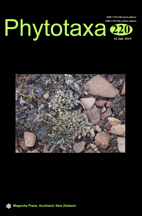Abstract
The genus Neidium contains a large array of diatoms with a wide range in structural and morphological forms. Many of the larger species in this genus are old taxa dating back to the 1800s. However, there continues to be confusion over these large species including N. iridis, N. dilatatum, N. firma, and N. amphigomphus. In this study, selected Neidium taxa from North America were examined using LM and SEM images from both Ehrenberg’s original samples and present day samples from Ontario (Canada) and New York State (USA). As well, Neidium individuals were isolated from Adriondack Park, NY (USA) and Ontario (Canada), amplified using a nested PCR protocol and sequenced for rbcL and 18S barcoding genes. The sequence data was concatenated to construct phylogenetic trees using Maximum Likelihood and Bayesian Analysis techniques. Here we present emended species descriptions and sequence data of four previously named Neidium taxa: N. tumescens, N. hitchcockii, N. dilatatum and N. amphigomphus. In addition, we designate isolectotypes for N. hitchcockii, N. dilatatum and N. amphigomphus. A new species is also formally described—N. fossum, sp. nov.—with a designated holotype and sequence data. Neidium fossum is distinguished by its size, longitudinal canal structure, central area and proximal raphe ends. Future work combining traditional morphological methods and phylogenetic methods will allow for further delineation of Neidium species and other diatom taxa.

